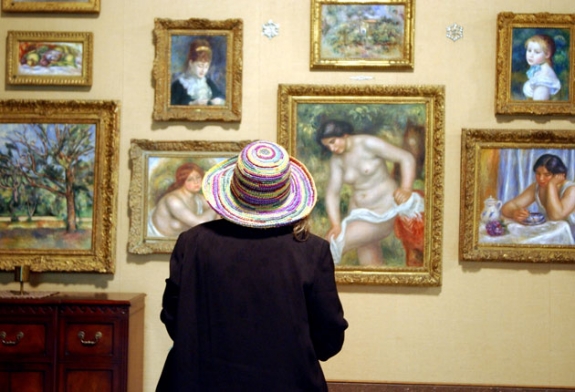Last week I visited the greatest art museum you have never heard of. It is called the Barnes Foundation and contains one of the most amazing collections of Impressionist, post-Impressionist and early modern paintings on earth, valued conservatively at over $25bn. That figure, of course, is largely meaningless, except in one respect. It confirms beyond all doubt that what is about to happen to the Barnes is the biggest art heist in history.
Nothing quite prepares you for the Barnes experience. Part of the shock is the sheer richness of what is on display. On wall after crowded wall are pictures you have seen time and again in glossy art books, but assumed were housed in the National Gallery, the Hermitage or some other great public institution – not in a neo-Palladian villa, monument to the foibles of an eccentric early 20th-century inventor, educator and aesthete, tucked away unsignposted in the wealthy Lower Merion Township on the western edge of Philadelphia.
There you will find, inter alia, 181 works by Renoir, 69 Cezannes (more than in all the museums of Paris combined), 59 Matisses, 16 Modiglianis, 46 Picassos and seven Van Goghs, as well as a smattering of Old Masters, and decorative and native arts from China, Europe, Africa, and America. But no less astounding is the way they are displayed.
Albert Barnes made his fortune from developing a hugely successful antiseptic and then used his money to indulge his love of art. He was a self-made scholar, convinced that the techniques of art, its use of space, shapes and forms, are timeless and universal. So only here will you find an El Greco flanked by a couple of Cezannes, a luscious Renoir hanging next to a crucifixion by a late 15th-century Dutch master.
Barnes himself insisted on the exact layout of the paintings. He saw his collection not as a museum but as a school, for the cultural edification of the humble – to open to great art the minds of "men and women who gain their livelihood by daily toil in factories, shops and schools".
His special genius, however, was to recognise the importance of the modern art movement long before others. He went on constant buying missions to Paris, befriending the likes of Henri Matisse and bringing these unconventional and unfamiliar works back to Philadelphia.
The City of Brotherly Love was not impressed. In April 1923 Barnes put on a show of 75 paintings by Picasso, Modigliani and others at the Pennsylvania Academy of Art, asking merely for "the simple justice of educated and unbiased attention". Alas, he did not get it – and in retrospect the seeds were sown for the controversy whose sad denouement, eight decades later, seems at hand.
Spurned by the Philadelphia cultural establishment, Barnes from that moment on had nothing but contempt for the self-appointed elite of the arts world. Instead he had a brilliant French-born architect called Jean Philippe Cret design a villa in Merion to house his collection.
Barnes ran the collection in his idiosyncratic fashion until his death in 1951; in his will bequeathed it to the foundation, stipulating that it should remain for ever at Merion, with the pictures arrayed exactly as he had organised. And for a while things continued much as usual. But the explosion in the popularity and value of modern art, and the recognition accorded it, came to change the equation entirely.



